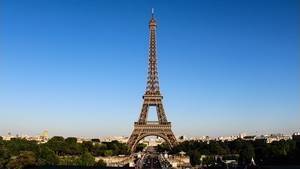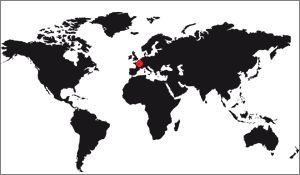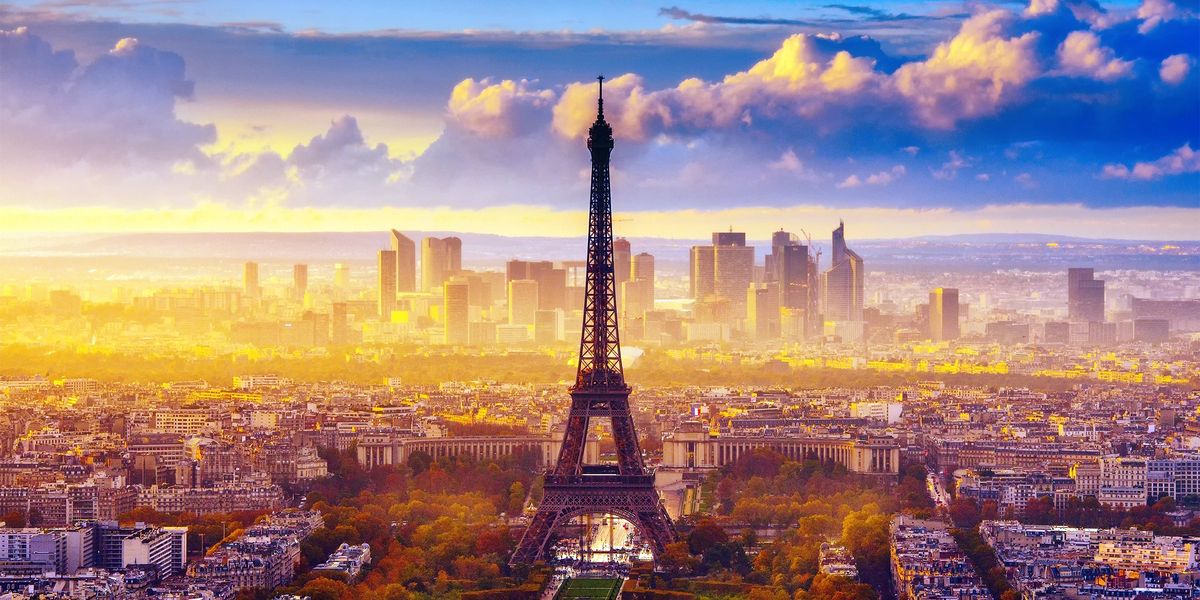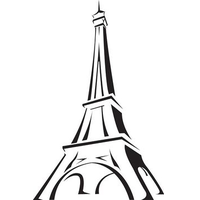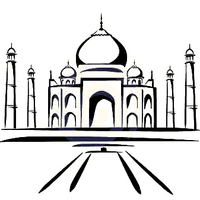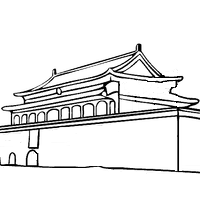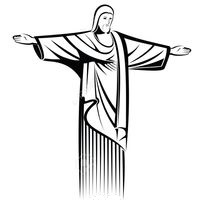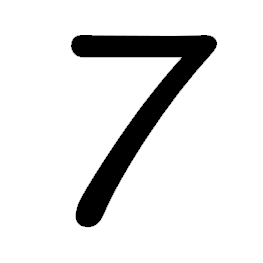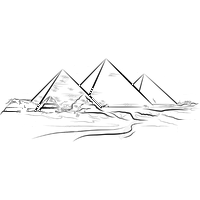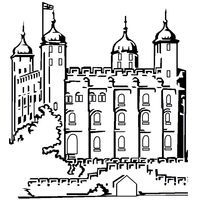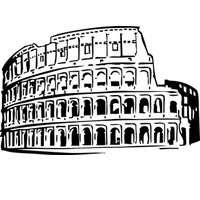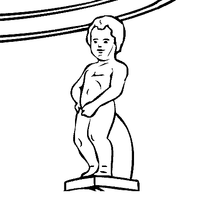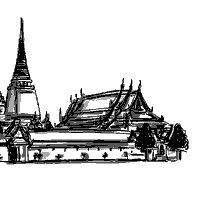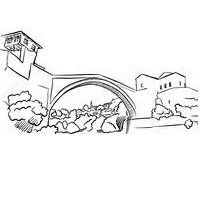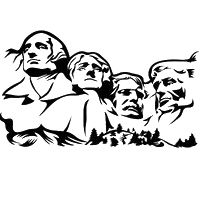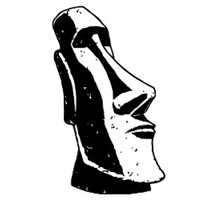On the banks of the Seine, in Paris, stands the Eiffel Tower, a magnificent iron structure that illuminates Paris and, more generally, France. If only one French architectural element were to represent this country, it would undoubtedly be, well before other monuments yet equally prestigious, but less emblematic: The Louvre, the Pont du Gard, the Gothic cathedrals or the Loire castles. Even famous sites such as the Arc de Triomphe do not manage to symbolize France as the Eiffel Tower does, it means its importance for the international fame of this country.
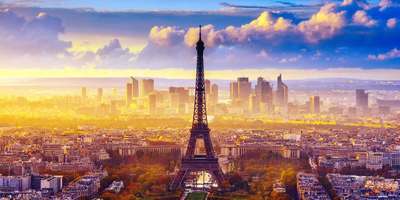
The Eiffel Tower
This enormous and majestic structure is 324 meters high and consists of 18,000 pieces of puddled iron. It was manufactured by Gustave Eiffel, engineer and famous entrepreneur who designed this building on the occasion of the celebrations for the centenary of the French Revolution and the Universal Exhibition of Paris which was held in 1889. Initially, to be the proof of the excellence of the French industrial know-how and had to be of a temporary nature, of only 20 years. Saved by broadcasting, it is today a symbol of French identity and a global tourist attraction.
Organise the visit
Visiting the Eiffel Tower is simple! Perfectly accessible from all types of Parisian transport, open during a wide time slot, you can take as much time as you like, there is no limited time for its visit, nor of imposed circuit.
Learn More: How visiting the Eiffel tower
The symbol of France
The Eiffel Tower sprang up for the centenary of the capture of the Bastille in 1889, on the side of the fields of Mars bordering the Seine, on the very spot where the 14th of July 1790 had been celebrated one of the highlights of the French Revolution: The feast of the Federation, in which three hundred thousand French people, gathered around King Louis XVI, had sworn an oath to the Constitution and proclaimed their desire to live together, free, equal and fraternal.
This day of euphoria, which was to be made to darken many disillusions, remained in the collective unconscious like that of the birth of the modern nation. It was he whom the governors of 1889 decided to celebrate in a monument - the highest ever built - a sign of the times, a "nail of three hundred meters" that would show the world that the genius of liberty had given birth to genius Of the industry. The tower was to dominate the rest of the exhibition, where, among other wonders, were the transatlantic panorama, the palace of food products, the machinery gallery, all placed under the incredible concentration of light, 1150 arc lamps and 10,000 incandescent lamps.
The idea of th tower was put to the competition and it was then that the French soon forgot that they had begun to celebrate their union in order to indulge in one of their manias: the polemic. One hundred and seven projects were examined. The most innovative used only iron, a material known up to now commoner. Charles Garnier, the architect of the Opera, found no words hard enough to stigmatize the colossal lighthouse, the then president of the Council proclaimed: "These eccentricities are not in the taste of the French." candidate ousted outbid: "It's from the railway station to the meter".
The project of Eiffel and Sauvestre prevailed. All the glory remains to Gustave Eiffel (1832-1923) engineer, who had already been illustrated by the construction of the viaduct of Garabit. We have forgotten the name of Companion, who was then famous for having been the chief of the building site on which rests the good progress of this perilous project.
To meet the specifications the tower of 1889 was 300.01 meters above ground level. Nowadays, since the construction of the television antenna added in 1957, it is from the top of its 318 meters that it contemplates Paris.
Conceded for twenty years it had to be demolished, at the end of the contract. It was the war of 1914 that saved her: she was mobilized in the service of military transmissions, then, in 1922, radio. The "coquette" of the men of 1889 had to set to work to survive.
Reprinted from "Paris, fête et lumière", edition "Images et magie"
Introduction
With a size of 312m at its construction, the Eiffel Tower was for more than 30 years the highest building in the world, until the construction of the Empire State Building in New York. Today it measures 324m (thanks to antennas that have been added since) and it is the most beautiful symbol of Paris, but also of France. It has three floors, plus one abandoned for a long time, it belongs to the city of Paris which has given the concession to SETE, which ensures its daily operation. The figures are impressive: 10,100 tons, of which 7300 are of metal architecture made of 18,000 pieces, it has a staircase of 1710 steps to go up to the summit, although it is not usable on a daily basis. The tower is repainted every 7 years by a team of 25 painters-mountaineers who apply 50 tons of paint on 250,000 m2 of surface.
The Eiffel Tower is a unique structure in the world, there are many other metal towers, but this one is special because it is a historic and visitable monument, while the others are only decorative structures (such as the Orbit Arcelor tower -Mittal in London) or less high. This is also why the French have a special attachment to the Eiffel Tower.
Discover: Description of the Eiffel tower
Discover: Location of the Eiffel tower
How to visit the Eiffel Tower
It is quite simple to visit the Eiffel Tower, everything is explained on the page of visits. Please note that it has 3 floors and there are three different tickets: One to walk (the visit then stops on the 2nd floor, the 3rd floor is not accessible by stairs), one to climb by elevator to the 2nd (It is the usual visit), and one to go up to the 3rd (It is a kind of extension of the 2nd ticket).
The visit to the 3rd floor is worth the cost for those who can afford the ticket, although the weather is not ideal as the 3rd floor contains interesting things to see. But each floor has its advantages: The first, very clean since it was redone (in 2011), is very well done. It contains a small museum, a cinema, shops, a conference room, a restaurant, and glass floors for fun. The second has remained more in the mind of the tower, it is more technological. It contains shops and a beautiful gallery that makes the tour. The third floor contains old photos, a frieze positioning the main monuments of the world, a champagne bar, and a whole lot of other things. Of course, the view from each floor is arguably the most beautiful thing you can find on the tower.
See also: Visit the Eiffel tower
See also: Description of the 1st, Description of the 2nd, Description of the 3rd floor
See also: To see of the Eiffel tower
The reason of the construction
Why did you want to build a 300m high metal tower in the middle of Paris? It is a very strange idea, but it rests on two simple reasons: the Universal Exhibition of 1889 and the French pride.
We are at the end of the nineteenth century. The massive industrialization, arrived in the United States in the middle of the XIXth and in Europe at the end of the XIXth, low in full. Industrial enterprises multiply, and we discover the power of metals for constructions. All countries want to show their supremacy in this field. It was in this context that the Universal Exhibition of 1889 came. In order to show the French genius, the organizing committee of the exhibition organized a competition for the elevation of a front door made of a tower of 1000 feet high, or 300m. Gustave Eiffel, an entrepreneur in the construction of metallic bridges, launched the idea and promoted it. He answers to the specifications (which he helped to draft, or at least influenced). Other files are filed, some of real competitors, but it is indeed Gustave Eiffel who won the contest.
Rising for a period of 20 years corresponding to the concession obtained by Eiffel for the exploitation of the tower, it was saved thanks to the scientific interest that it generated.
See also: Technologic context
See also: The others projects of towers durant the XIXth century
The reluctance of artists
It is a fairly well known event in the history of the Eiffel Tower, that of the reluctance of artists. When the competition was won and the work began, there was a protest movement against the construction of the Eiffel Tower initiated by a collective of artists who feared Paris would be disfigured by this imposing metal structure. Other voices have risen to denounce the risks of collapse of the buildings that bordered the field of Mars, following the deformation of the ground. These artists signed a letter in the newspaper "Notre Temps" on February 14, 1887. Among the signatories were Emile Zola, Alexandre Dumas fils, Guy de Maupassant, Sully-Prudhomme, etc.
This was followed by a reply from Mr Alphand, chairman of the organizing committee for the exhibition, and then Mr Eiffel, who explained that there was no risk and proved it by his calculations. History will prove it right, and these artists woke up late to get the work stopped, so they did not prevent the engineer from building his tower.
See also: Réticences of artists
The construction
The construction of the Eiffel Tower was rapid, given the importance of the construction site. The first work concerned the foundations, and the first difficulties appeared: The two foundations on the banks of the Seine were filled with water, it was necessary to invent a bell system under pressure to make the digging without the infiltrations preventing the workers from working . These tricks made it possible to build these foundations, to cast them, and to create on them the heavy massifs which still serve as our base for the 4 pillars.
Then came the assembly period. It was first of all the pillars that required the use of cranes, which would be used for the floors, but also of scaffolding on which were placed sand boxes. By pressing the metal beams on these sand boxes, it was enough to remove a little sand so that the battery slowly lowers a little. Thus, the alignment of the 4 pillars at the level of the first floor has been adjusted in height. On the other hand, in order to align their positions with each other, it was necessary to use very powerful cylinders which pushed them or pulled them out of a block. These cylinders were placed between the concrete block and the metal structure and that is why there is a legend that the Eiffel tower is mounted on a cylinder, which is false because as soon as the beams on the first floor were aligned, the jacks were removed.
The rest of the construction went rather well thanks to the cranes that climbed the beams. These cranes followed the rails of the future elevators, rails which they themselves laid as the elevation increased! Thanks to this trick and to the scaffolding, the assembly continued normally. Note that not one worker died on the site, it was one of the pride of Gustave Eiffel.
See also: Maps of the Eiffel tower.
See also: Calculation of forces.
See also: Construction of the Eiffel tower.
The inauguration
The inauguration of the Eiffel Tower took place on 31 March 1889, just after the completion of the construction of the metal structure. The workers were still working on it, but it was for the installation of the machinery and the installation of the elevators, plus certain finishes, here and there. But the principal, the bone, was finished. At the top stood the pole ready to receive the tricolor flag, which was the symbol of the official inauguration.
The day was quite simple. The officials climbed to the top, there were a few speeches and Eiffel mounted the tricolor flag. Then everyone came down to join the workers. There were a few more speeches, Eiffel received from the minister the legion of honor, and every worker was congratulated by the presentation of a commemorative medal. The commemorative medal "Tour Eiffel" is a symbolic souvenir object that was distributed in 1889 to all the people who participated in the construction of the monument. His strike was decided on March 16, 1889, a few days before the official inauguration of the tower.
Then there was a meal and everyone scattered. Nowadays, the inauguration of such a monument would take more time!
Learn more: Inauguration of the Eiffel tower.
Scientific applications
As soon as it was built Eiffel knew that to save his tower from destruction, 20 years later, he had to prove that it had a usefulness. Of a scientific nature he began to study aerodynamics since the height of the tower allowed him to make experiments on the fall of the bodies. Quickly many people saw an interest in the high-rise tower. A first meteorological laboratory was installed at the summit, and then there was the installation of an open-air manometer. It studied the atmospheric absorption of radiation, the solar spectrum, the oscillations of the tower top and its reasons (the summit forms a kind of oval, every day), and even the physiological effects of climbing on foot.
But the army will be the savior of the tower. Indeed, the first attempts at broadcasting were promising, so the army found an interest in the tower and ordered it to be kept. It is thanks to this that it is still in Paris today.
Learn more: Scientific applications of the Eiffel tower.
History through time
Since its construction, in 1889, and until our days France has lived many events. As a symbol of Paris the Eiffel Tower has gone through the ages and has undergone many modifications. Some renovations (1890, 1900, 1937, 1982 and 2011), tragic events, such as the German occupation, the progress of television broadcasting, and finally a whole host of festivals and curiosities that history has left us.
Learn more: History of the Eiffel tower.
The symbols of the Eiffel tower
What is the Eiffel Tower the symbol of? Of Paris, of course, but also of France, that is obvious. Moreover it is she who is represented as soon as one wants to symbolize the capital, or the country, abroad. It must be admitted that other countries are rarely in this situation, where, to illustrate their countries, there are mostly monuments. In France, it is the Eiffel Tower almost systematically. But being the emblem of France is not enough, the Eiffel Tower is also the symbol of the French genius, in the sense civil engineering. It is also associated with the grandeur of France, as a feeling of national pride that unites the people. Indeed it is to her that we turn to mark a national event, to celebrate a particular date, or to please a country whose France is the host for a few days.
Do you know that the Eiffel Tower also represents other things? All the part "Symbols of the Eiffel Tower" is to be read in the folder below.
Learn more: Symbols of the Eiffel tower.
And more, on this website...
This website offers much more information than this. See, for example, the study of the visibility of the top of the tower, the list (necessarily incomplete) of the celebrity visitors, the biographies of the characters involved in its construction, the Eiffel calculations of the forces due to the winds, a chronology of events, the description of the initial concession contract, the cost of the tower, the explanation of its lighting, including the night illumination, etc.
And as it is not yet everything, you have below all the available pages.




